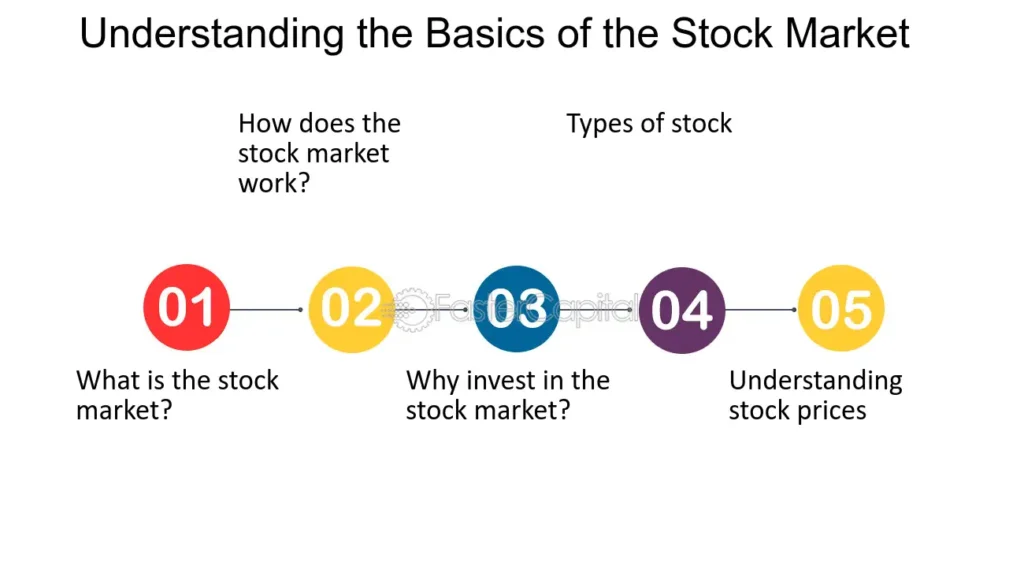The US stock market is one of the largest and most influential financial markets in the world. It plays a crucial role in the economy, allowing businesses to raise capital and investors to grow their wealth. Understanding how it works is essential for anyone looking to participate in stock investing.
What is the Stock Market?
The stock market is a marketplace where investors buy and sell shares of publicly traded companies. It consists of various exchanges, with the two primary ones being the New York Stock Exchange (NYSE) and the Nasdaq. These exchanges provide a platform for companies to list their stocks, allowing investors to trade them in real time.
How Does the Stock Market Work?
At its core, the stock market operates based on supply and demand. When investors believe a company will perform well, they buy shares, increasing the stock price. Conversely, if they anticipate poor performance, they sell shares, causing the stock price to drop. This continuous fluctuation is influenced by economic factors, company performance, and investor sentiment.
Key Participants in the Stock Market
Several key players contribute to the functioning of the stock market:
- Retail Investors: Individual investors who buy and sell stocks for personal gain.
- Institutional Investors: Large organizations such as mutual funds, pension funds, and hedge funds that trade in significant volumes.
- Stockbrokers: Licensed professionals who facilitate stock trades on behalf of investors.
- Market Makers: Entities that provide liquidity by buying and selling stocks to ensure smooth market operations.

Types of Stocks
Investors can choose from various types of stocks based on their investment goals:
- Common Stocks: Provide shareholders with voting rights and dividends, though dividends are not guaranteed.
- Preferred Stocks: Offer fixed dividends and priority over common stockholders in case of liquidation.
- Growth Stocks: Represent companies expected to grow at an above-average rate but may not pay dividends.
- Value Stocks: Stocks trading below their intrinsic value, often appealing to long-term investors.
- Dividend Stocks: Companies that regularly distribute profits to shareholders in the form of dividends.
Stock Market Indices
Indices help measure the overall performance of the stock market. Some major US stock market indices include:
- S&P 500: Tracks the performance of 500 large-cap companies.
- Dow Jones Industrial Average (DJIA): Includes 30 blue-chip companies.
- Nasdaq Composite: Focuses on technology and growth-oriented stocks.
- Russell 2000: Represents small-cap stocks in the US market.
How to Invest in the Stock Market
Investing in the stock market requires careful planning and research. Here are some steps to get started:
- Set Investment Goals: Define short-term and long-term financial objectives.
- Choose a Brokerage Account: Select an online or traditional brokerage to buy and sell stocks.
- Research and Select Stocks: Analyze companies, their financial health, and market trends.
- Diversify Your Portfolio: Spread investments across different sectors to minimize risk.
- Monitor and Adjust Investments: Regularly review stock performance and adjust as needed.
Factors Affecting the Stock Market
Several factors impact stock prices and market movements, including:
- Economic Indicators: GDP growth, employment rates, and inflation affect investor confidence.
- Interest Rates: Federal Reserve policies influence borrowing costs and investment trends.
- Corporate Earnings: Strong earnings reports often drive stock prices higher.
- Global Events: Political instability, pandemics, and trade policies can lead to market volatility.
- Investor Sentiment: Market psychology and trends play a significant role in stock price movements.
Risks and Rewards of Stock Market Investing
While the stock market offers opportunities for wealth creation, it also comes with risks. Market fluctuations, economic downturns, and company-specific issues can lead to losses. However, investors who adopt a long-term perspective, practice diversification, and stay informed can mitigate risks and achieve financial growth.
Conclusion
Understanding the basics of the US stock market is essential for making informed investment decisions. By learning how stocks work, analyzing market trends, and managing risk effectively, investors can navigate the complexities of the stock market with confidence. Whether you are a beginner or an experienced investor, staying educated and adapting to market conditions will help you achieve your financial goals.





